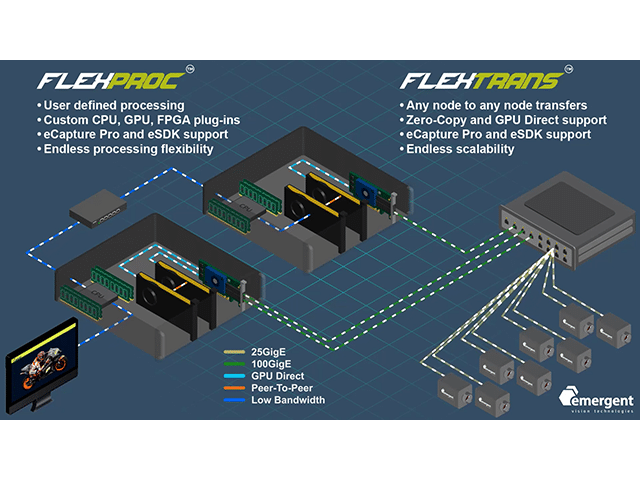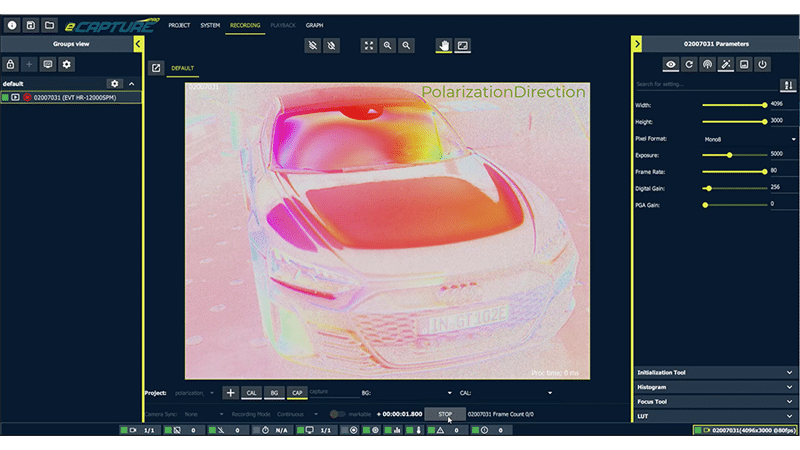Revolutionizing Imaging with Sony’s SWIR Technology in the Upcoming Eros Camera Series

In the ever-evolving world of imaging technology, Sony’s latest innovation in shortwave infrared (SWIR) sensors marks a significant leap forward. These sensors, which will be a key feature in our upcoming Eros 5GigE camera family, promise to redefine the standards of imaging in various industries. This article delves into the technical prowess of Sony’s SWIR sensors and their integration into the Eros camera series, highlighting the advantages over traditional RGB sensors and exploring typical applications.
Sony Sensor Technology: A Game Changer for SWIR Cameras
Sony’s new SWIR sensors, particularly the IMX992 and IMX993, represent a breakthrough in imaging technology. These sensors are designed to capture images in the SWIR range (400 to 1700 nm), which is beyond the capabilities of standard RGB sensors. This extended range allows for the detection of materials and substances invisible to the naked eye, opening up a plethora of possibilities for SWIR cameras in various fields.

Sony SWIR sensors can aid in contaminant detection applications. In this example, a visible light camera captures an image of black beans and black-colored contaminants on the left, while the image on the right shows an image captured with a SWIR camera (1300 nm). (Image credit: Sony Semiconductor Solutions Corporation)
Emergent Vision Technologies Eros Camera Series: Harnessing SWIR Power
The Eros camera family (coming in 2024), featuring models like the HE-300-S-I, HE-1300-S-I, HE-3200-S-I, and HE-5300-S-I, is set to incorporate these advanced SWIR sensors. For instance, the HE-3200-S-I model features the Sony IMX993 sensor, offering a resolution of 2048 x 1536 and a maximum frame rate of 170fps. This SWIR camera can capture images in the 400 to 1700 nm range, making it highly versatile for various applications.

Emergent Vision Technologies will offer SWIR cameras in its Eros 5GigE series in 0.33MP, 1.31MP, 3.14MP, and 5.24MP image sensor models.
Advantages of SWIR Sensors Over RGB Sensors
Enhanced Material Detection: SWIR sensors can detect materials and chemicals that are invisible in the RGB spectrum, such as moisture content, chemical composition, and more.
Improved Visibility in Low Light: SWIR technology excels in low-light conditions, providing clearer images than RGB sensors.

Image A was captured with visible light while images B and C were captured in SWIR and LWIR, respectively.
Penetration through Obscurants: SWIR cameras can see through fog, smoke, and dust, whereas RGB sensors would struggle.
Non-Invasive Imaging: Ideal for medical and biological applications, SWIR sensors can image through surfaces without causing damage or requiring invasive methods.
Typical Applications of SWIR Technology
- Agricultural Imaging: Assessing crop health, moisture levels, and pest detection.
- Industrial Inspection: Identifying defects in electronics, semiconductors, and materials.
- Medical Imaging: Non-invasive diagnostics and imaging in dermatology and vascular studies.
- Environmental Monitoring: Detecting pollutants and environmental changes.
- Security and Surveillance: Enhanced imaging in various light conditions and through obscurants.
Conclusion
The integration of Sony’s SWIR sensors into the Eros camera series represents a significant advancement in imaging technology. With their ability to capture images beyond the visible spectrum, these cameras will find applications in a wide range of industries, from agriculture to medical imaging. The Eros camera series, equipped with these sensors, is poised to set new benchmarks in imaging capabilities, offering unparalleled advantages over traditional RGB sensors.
For more detailed information on the Eros camera models and their specifications, reach out to us today.




